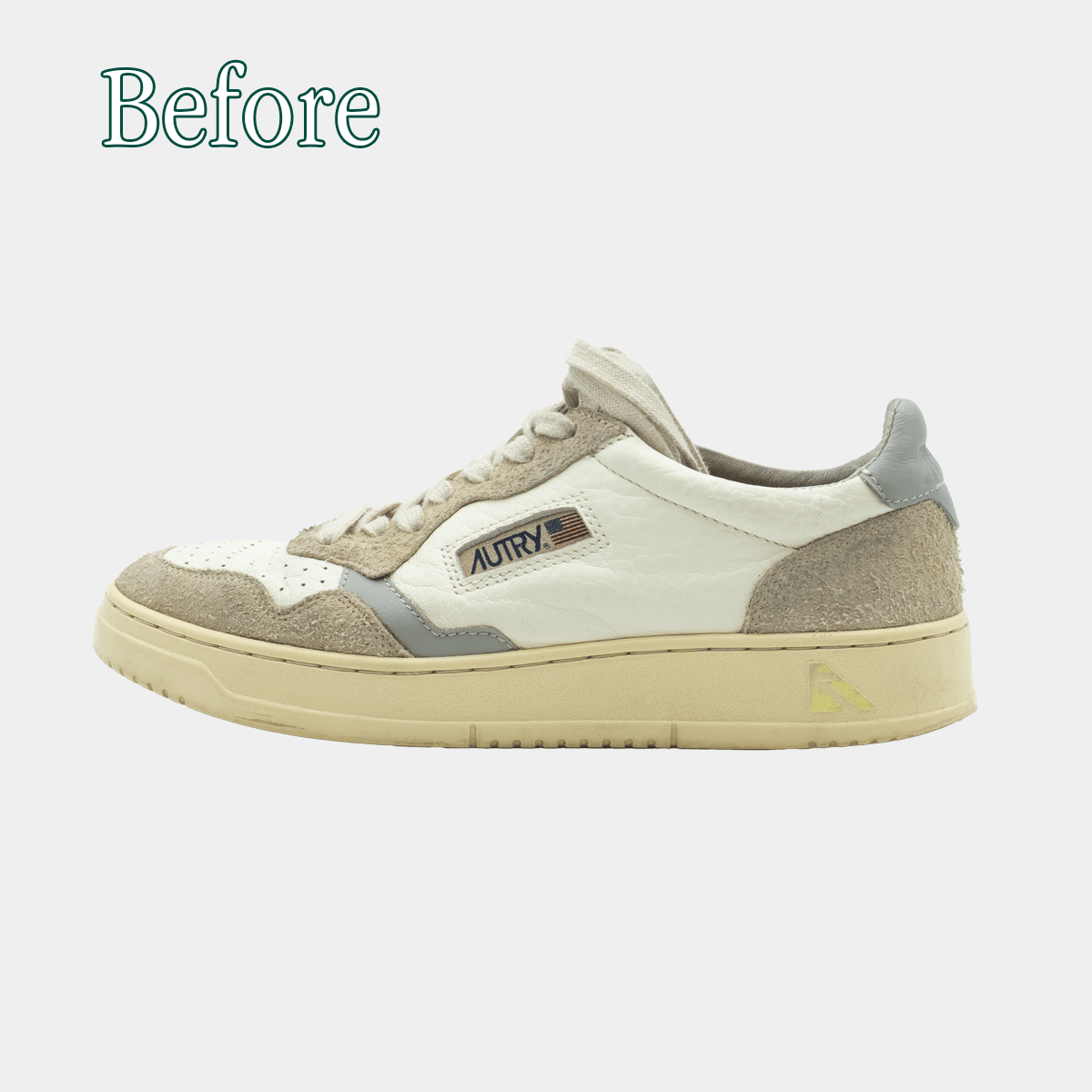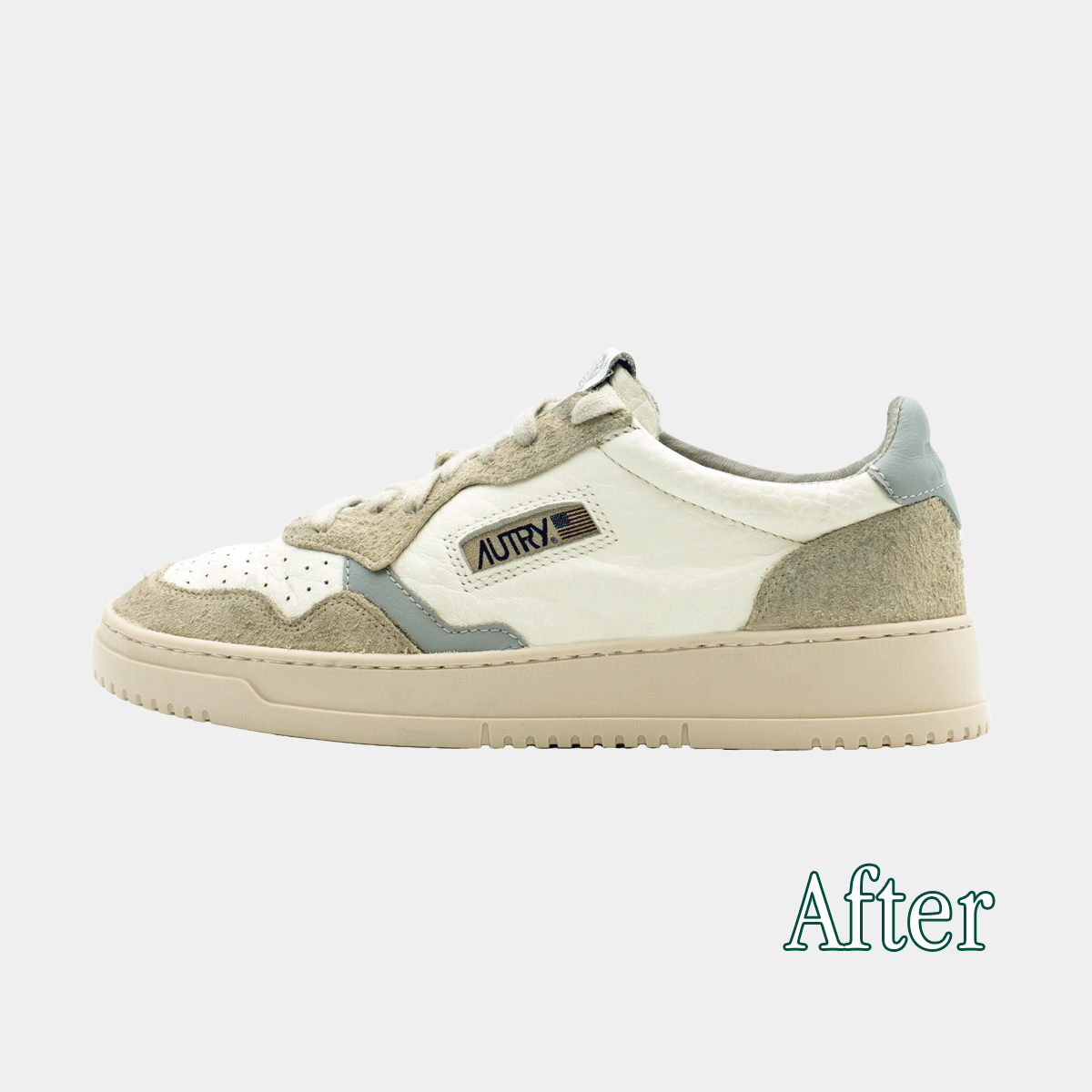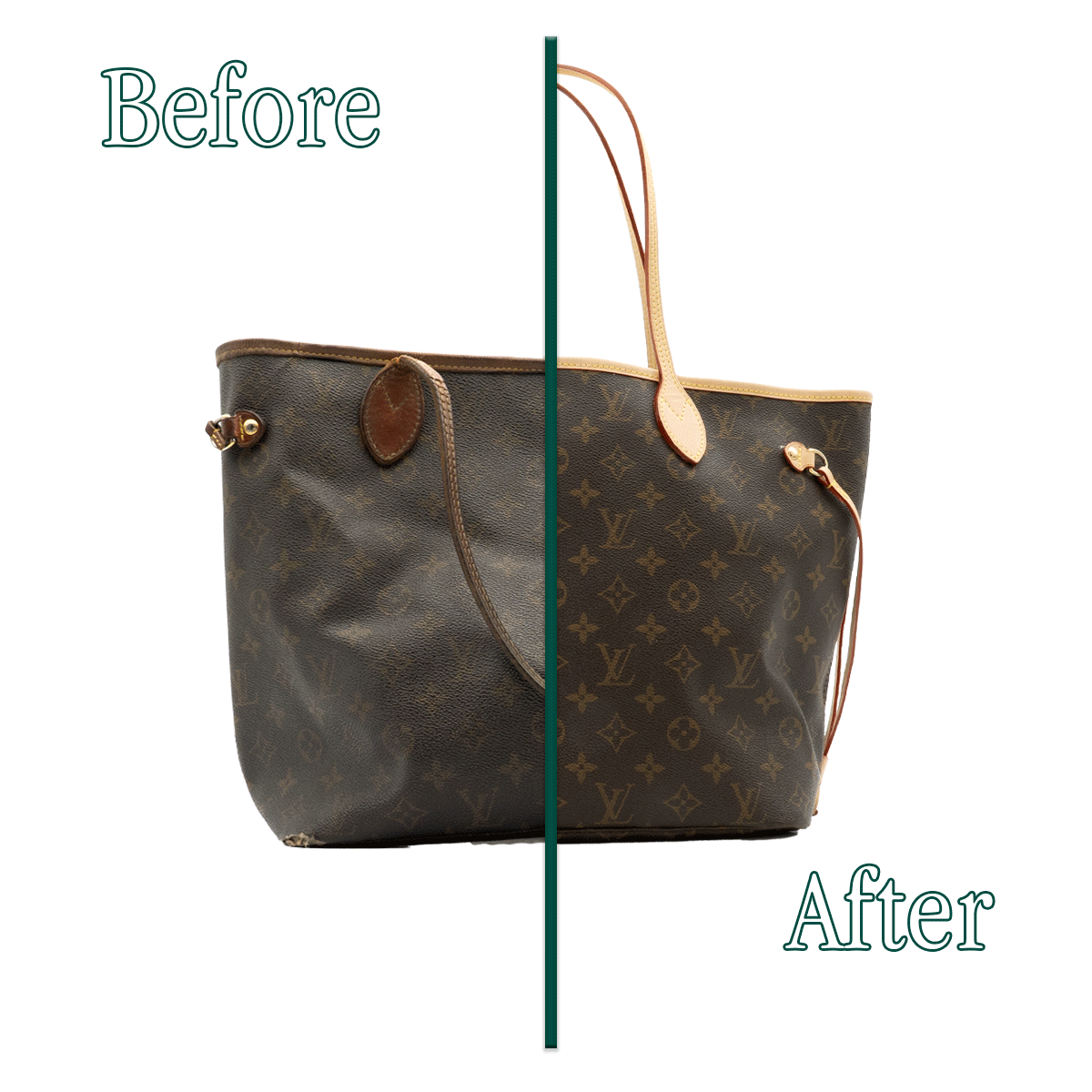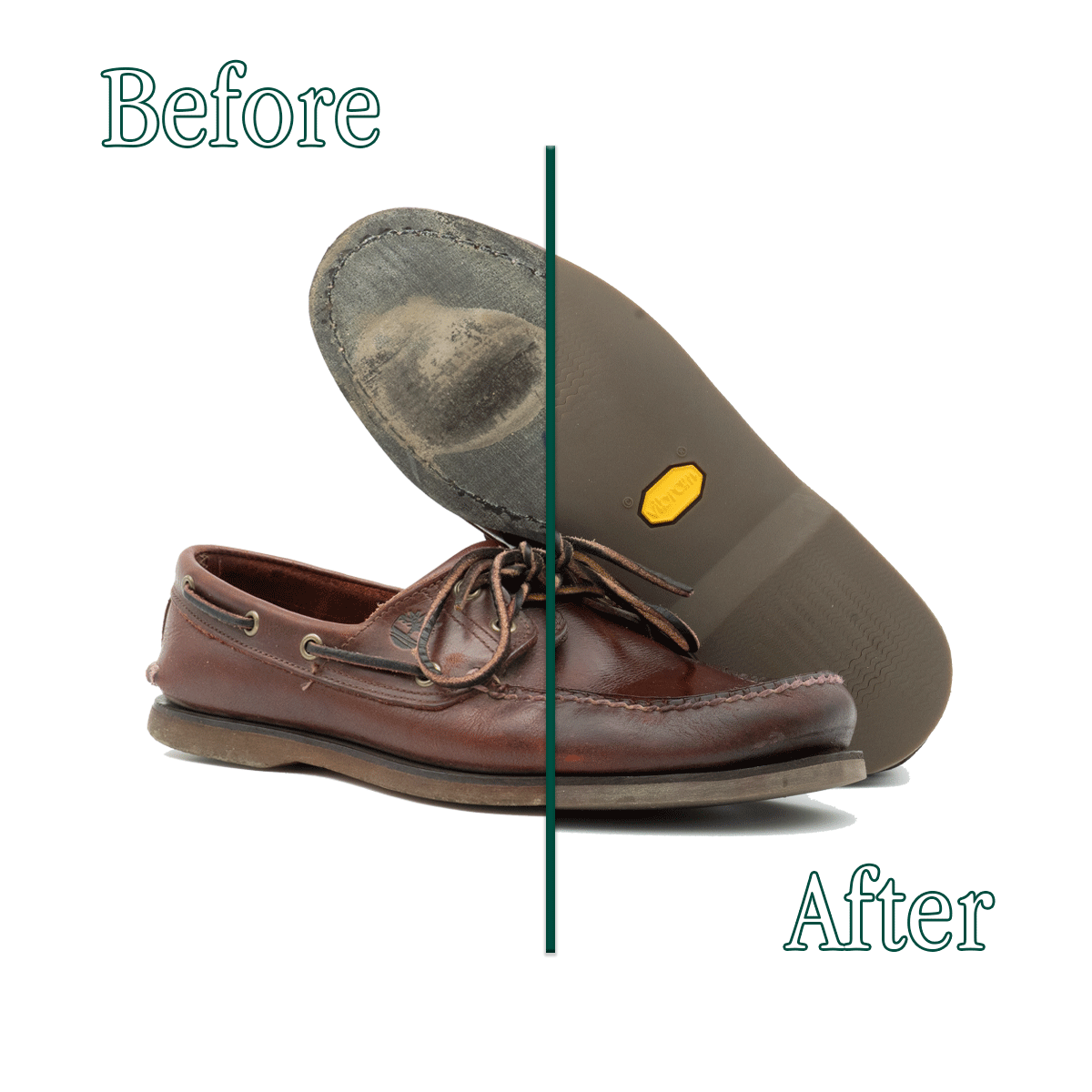Autry Medalist Low resoling
The Autry Medalist Low is one of the most recognizable sneakers of recent years, inspired by the world of '80s tennis. Born in Dallas in 1982, Autry has returned to the limelight thanks to its essential style and an approach faithful to the vintage American aesthetic . The Medalist Low model, in particular, is appreciated for its balance between sportiness and versatility .
But what happens when an Autry starts to show signs of wear, especially in the sole?
In our laboratory, we developed a specific intervention for this model. It involves a complete restoration of the Autry Medialist , with particular attention to replacing the sole.
The phases of the intervention
-
Removing the original sole
The first step is always disassembly. The sole is carefully removed so as not to damage the upper, which is often still in good condition. -
Application of a new compatible sole
We use a sole we developed in-house that integrates perfectly with the structure of the Medalist Low. The design remains consistent with the original, but the materials are lighter and more durable. -
Any treatments on the upper
If necessary, we clean, rehydrate the leather, and perform small repairs or spot dyeing. The goal is to harmonize the overall appearance of the shoe without altering its identity. -
Final reassembly and sewing
All reassembly work is done by hand, using traditional shoemaking techniques. This ensures greater precision and durability. Finally, we stitch the sole.
A service available everywhere
This type of restoration is also available remotely. We'll arrange the pickup and return of your shoe, both in Italy and abroad. This solution is designed for those who want to entrust their Autry shoes to a specialized workshop, even if they're not physically in Milan.
Why restore instead of replacing?
Extending the life of a shoe makes sense not only for sentimental or aesthetic reasons, but also from an environmental perspective. Refurbishing a quality sneaker with appropriate materials and meticulous workmanship reduces the environmental impact associated with the production of a new pair.
 Derby
Derby Sneakers
Sneakers




